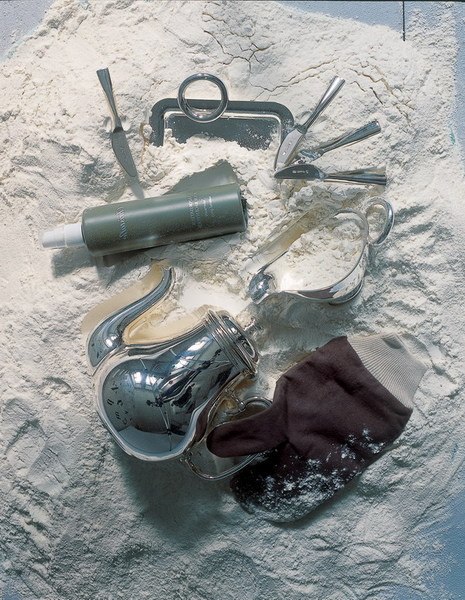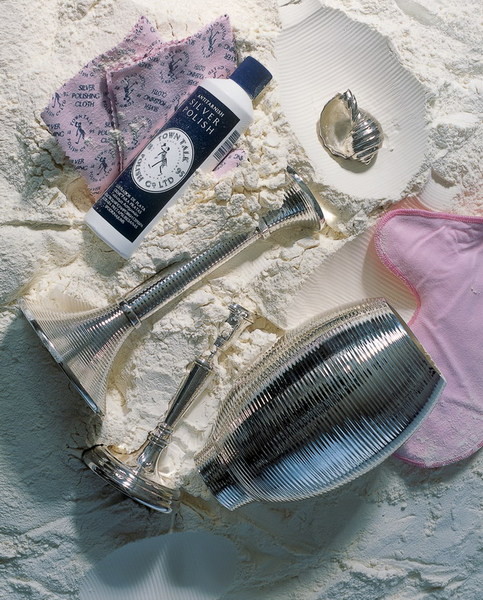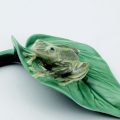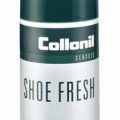 How to clean silver«In Russia it is too early to talk aboutdecor. Our people should be taught not to decorate interiors, but to clean them,' one very famous decorator said angrily when I offered her to give a master class on table setting. Her mood was spoiled by a call from customers who reported yet another 'intrigue' of the housekeeper. This time she had ruined an antique silver jug. The old master had decorated it with elegant engraving and blackening, which the unfortunate woman had taken for dirt and carefully cleaned with a brush and a paste of ammonia and chalk. After that, the rare vessel sparkled 'like cat's eggs' (in the words of the housekeeper, now unemployed). In this form, it took a worthy place among the stainless steel pots and was not much different from them. The strangest thing about this story was that no matter who I told it to, the reaction was the same: "Don't be surprised, just write how to clean silver." Here. I'm writing. "In general, silver items can be in two states: mirror-polished (new silver) and "live" (silver that is actively used), "say consultants from the Louvre boutique. "It is a very soft metal, so over time its surface becomes covered with "wrinkles," they can't even be called scratches, because in this case the layer of material is not removed, but "pressed through," the molecules "are compacted," the material becomes denser, like human skin over the years. Therefore, silver that is used constantly is less susceptible to the influence of the external environment. Conclusion: in order to take less care of silver items, you need to use them more often!» Folk remedies
How to clean silver«In Russia it is too early to talk aboutdecor. Our people should be taught not to decorate interiors, but to clean them,' one very famous decorator said angrily when I offered her to give a master class on table setting. Her mood was spoiled by a call from customers who reported yet another 'intrigue' of the housekeeper. This time she had ruined an antique silver jug. The old master had decorated it with elegant engraving and blackening, which the unfortunate woman had taken for dirt and carefully cleaned with a brush and a paste of ammonia and chalk. After that, the rare vessel sparkled 'like cat's eggs' (in the words of the housekeeper, now unemployed). In this form, it took a worthy place among the stainless steel pots and was not much different from them. The strangest thing about this story was that no matter who I told it to, the reaction was the same: "Don't be surprised, just write how to clean silver." Here. I'm writing. "In general, silver items can be in two states: mirror-polished (new silver) and "live" (silver that is actively used), "say consultants from the Louvre boutique. "It is a very soft metal, so over time its surface becomes covered with "wrinkles," they can't even be called scratches, because in this case the layer of material is not removed, but "pressed through," the molecules "are compacted," the material becomes denser, like human skin over the years. Therefore, silver that is used constantly is less susceptible to the influence of the external environment. Conclusion: in order to take less care of silver items, you need to use them more often!» Folk remedies
- Rub silver with gruel from ammonia andchalk. After the mixture has dried, rinse thoroughly with water and wipe dry. Stains of yolks can be easily cleaned with ashes. Silver can be chalked. Silvered items - no: chalk wipe the finest coating.
- Silver can be cleaned well with toothpaste.
- To keep your utensils always shiny, immediately after use they should be placed in boiling water with a small amount of soda.
- Place darkened silverware in warm potato broth for 15 minutes. Then scrub with a brush and rinse in water.
- Electrolytic method. At the bottom of the glass container, lay aluminum foil. Carefully lay out the silverware on it. Stir in a hot water soda (a tablespoon per liter). With this solution, pour in the silver and leave overnight. In the morning everything will shine and shine.
Historically, silver cleaning was doneprofessionals. In the times of the ancient Romans, there were special "silver slaves" (servi ad argentum). Noble English families had a butler responsible for the condition of the silverware, and a footman responsible for cleaning it. The footman polished the spoons, knives and forks until they shone, and the butler never left him for a minute, checking whether they were shiny enough and everything was in place. In Tsarist Russia, footmen spent hours polishing silver with their fingertips, rubbing out small scratches at the same time. Today, everything has become simpler. With the help of modern lotions, sprays, ultrasonic machines and rolls with special impregnation, the same result can be achieved in minutes and even seconds. The choice of silver care products is almost less than the dishes themselves. It is important that these products not only clean, but also protect the noble metal from possible tarnishing and yellowing. "Stale" It is recommended to clean silver at least once a month. It should be wiped with a napkin or glove made of flannel or suede (this is what salespeople do in boutiques). You can find cleaning products in the same stores where silver is sold (the Louvre and Sens boutiques). In addition to cleaning cloths, brushes, sprays, pastes, containers with cleaning liquid, you can find paper pads soaked in a protective compound, rolls and bags for storing cutlery. If you are talking about cleaning and polishing a large number of items, it makes sense to call an English master with a polishing machine to your home (this service is provided by the Sens boutique). «Neglected» items can be cleanedOnly with a special paste. It will remove oxidation (blackening) and yellowing. The most difficult cutlery to clean are forks. They are placed in a plastic basket, and then in a container with a special solution (the small cells of the basket allow it to be used for jewelry). Three seconds are enough for cleaning. In case of heavy contamination - ten minutes. Cutlery can also be washed in a regular dishwasher. Just do not use products with chlorine and avoid contact of steel knife blades with silver-plated and silver surfaces. After the cycle is complete, open the machine so that the steam does not settle on the cutlery and leave marks. To avoid corrosion, use water softeners. Cutlery made of combined materials (for example, horn plus silver) should be washed by hand with a soft sponge and non-abrasive products. Finally, two very important notes. First: silver should be treated with care, but without fanaticism. Remember: no matter how carefully you look after it, sooner or later it will inevitably show signs of time. And secondly: the better the silver (its composition and the quality of the initial polish), the more beautifully it will age and the easier it will be to look after it. You can buy professional silver cleaning products at the Louvre boutique (phone 737 8504) and Sens (phone 727 2496). Silver care tips
«Neglected» items can be cleanedOnly with a special paste. It will remove oxidation (blackening) and yellowing. The most difficult cutlery to clean are forks. They are placed in a plastic basket, and then in a container with a special solution (the small cells of the basket allow it to be used for jewelry). Three seconds are enough for cleaning. In case of heavy contamination - ten minutes. Cutlery can also be washed in a regular dishwasher. Just do not use products with chlorine and avoid contact of steel knife blades with silver-plated and silver surfaces. After the cycle is complete, open the machine so that the steam does not settle on the cutlery and leave marks. To avoid corrosion, use water softeners. Cutlery made of combined materials (for example, horn plus silver) should be washed by hand with a soft sponge and non-abrasive products. Finally, two very important notes. First: silver should be treated with care, but without fanaticism. Remember: no matter how carefully you look after it, sooner or later it will inevitably show signs of time. And secondly: the better the silver (its composition and the quality of the initial polish), the more beautifully it will age and the easier it will be to look after it. You can buy professional silver cleaning products at the Louvre boutique (phone 737 8504) and Sens (phone 727 2496). Silver care tips
- Silver is a very soft metal, so never clean it with hard sponges or abrasives.
- Silver must be cleaned separately from other metals. Otherwise, the objects will oxidize.
- Clean large items (candelabra, trays)with sprays, small ones - with paste, although a container with a special solution is more convenient. The exception is knives; their blades (except for fish) are made of stainless steel. If you dip a "combined" knife into a cleaning solution, stains will appear on the blade.
- Cutlery should be stored and washed in such a way thatthey do not touch each other. When stacking silver dishes, they should be placed between napkins. Store cutlery in rolls and bags with a special impregnation. By the way, this is what manufacturers and sellers do themselves.
- When cleaning silver, avoid hallmarks!Especially if you are dealing with an item of a famous brand. How well the hallmark is read will affect the price of this item in 50 years, when it becomes an antique (at auctions, the price of two identical items with hallmarks of different degrees of preservation is an order of magnitude higher).
- Avoid allowing silver to come into contact with caviar. The resulting stains are quite difficult to remove.
- It is absolutely forbidden to clean silver with blackening, since the blackening will also come off the item along with the dirt.
- Never wash silver cleaning cloths and gloves! They are soaked in a special solution and after washing they will lose their ability to clean anything.









